The Soft Winter Palette Explained: A Guide to Muted Cool Tones

Key Takeaways
**Soft winter** is a gentle, low-contrast deep-cold season defined by subtle illumination, tender tints and persistent nip as opposed to savage freeze. In style and home life, that translates to cool tones with soft edges–think dusty blue, misty gray and heather plum.
💫 Discover Your Complete Color Palette
Ready to discover all the colors that make you look radiant? Our comprehensive color analysis will reveal your complete personal palette - perfect for hair, makeup, and wardrobe decisions.
Take Color Analysis Quiz →Days grow short, air turns crisp and layering is a matter of comfort. Whether to schedule an outfit, skincare or travel, a sense of timing and texture go a long way.
The following are distinct tips, color guides and uncomplicated methods of remaining warm and stylish.
What defines the soft winter palette
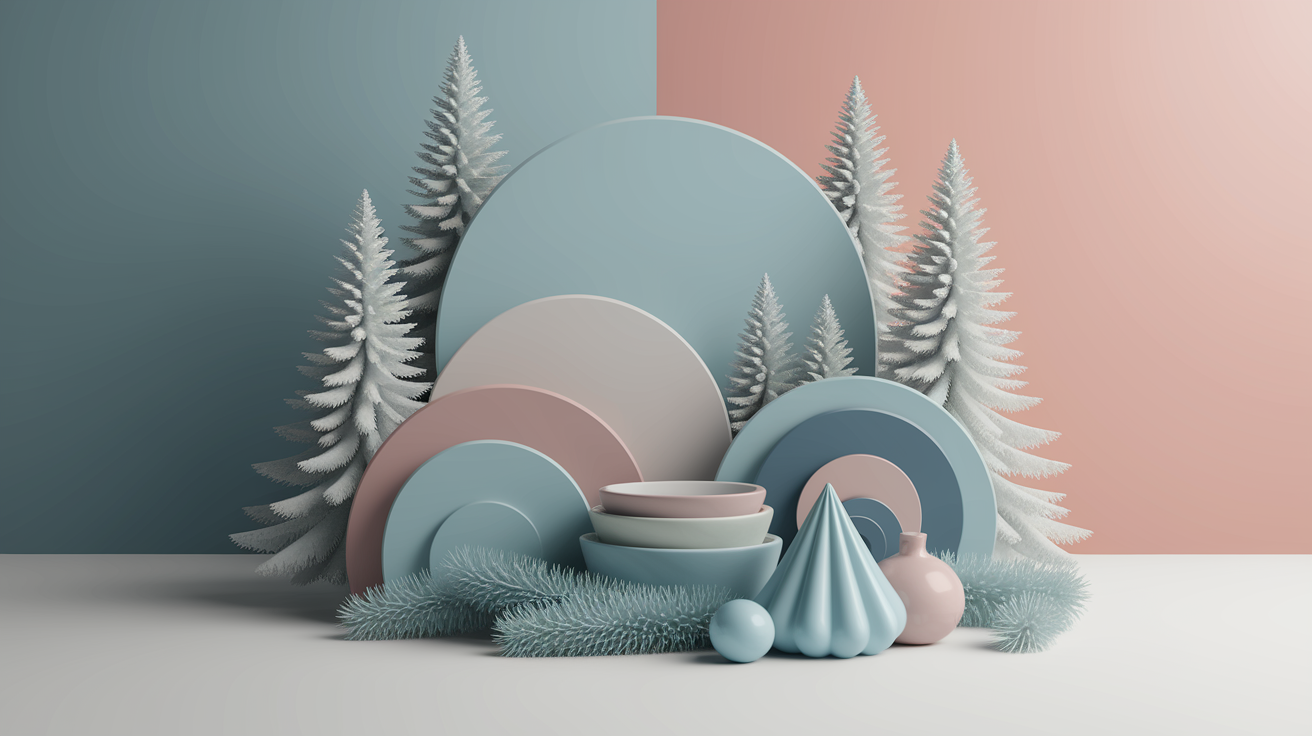
A cool base, muted pigments, and medium contrast distinguish soft winter individuals. This unique season mixes winter's depth with fall's quiet, remaining cool but tender. The color palette features calm, misty, and balanced shades, ensuring that outfit choices reflect understated beauty rather than harsh or fluorescent tones.
1. The cool undertone
Cool undertones fuel this palette. Soft winter is characterized by blue-based, yellow-free pigments. Soft winter skin, hair and eyes all read cool at first glance, with a muted, not icy, edge. The cool hold even when the colors grow deep.
In comparison to true winter, cools here are gentler and less glassy. A soft navy on top of an ink navy. A pearl white on a paperwhite frost. The effect is soothing, not electrifying.
- Cool-leaning: dusty blue, slate, soft navy, pearl white, cool cream, mushroom gray, taupe with cool undertones, pine green, teal with gray, plum with blue.
- Warm-leaning (avoid): butter cream, tomato red, golden olive, camel, peach, warm taupe, ivory with yellow, rust, coral, lime.
2. The muted influence
Gray-softened colors describes the mood. Dusty blues, pale lavenders, sage greens, and cool creams all evoke misty mornings and overcast skies. They have winter's sharpness but whisper.
High saturation will swamp soft winter features. Neon teal or bright fuchsia looks sharp and noisy. These muted tones leave room for skin and eyes to breathe, which comes across as elegant on camera and in real life.
Examples:
- Dusty blues instead of electric cobalt
- Soft lavender instead of vivid purple
- Sage or eucalyptus instead of emerald
- Cloudy teal instead of tropical teal
3. The medium contrast
Try to create medium increments between light and dark. Ditch hard black-and-white and flattone-on-tone appearances. This equilibrium honors your natural blend of cool undertone and moderate depth.
**Soft winter palette** about what makes the soft winter palette 2-3 shades in one look! Vary the value a notch or two, and keep undertones in sync. A pearl white knit, slate trousers and soft navy coat reads polished and calm.
Effective medium contrast combinations:
| Base | Partner | Accent |
|---|---|---|
| Soft navy | Mushroom gray | Pearl white |
| Charcoal | Cool cream | Dusty blue |
| Pine green | Taupe (cool) | Pale lavender |
| Slate blue | Soft white | Plum (muted) |
4. The deep value
Depth still counts. Charcoal, deep navy and pine green anchor the palette without the harshness of true black. These shades really frame the face and create shape.
Deep colors as anchors – coats, pants, boots – then brighten with dusty blue, cool cream or soft white near the face. This blend maintains clarity while maintaining the muted quality of soft winter.
Layering does the trick. Charcoal pants, soft white shirt, slate cardigan and muted plum scarf. OR deep navy dress with a pearl white wrap and mushroom gray shoes.
Identifying your season
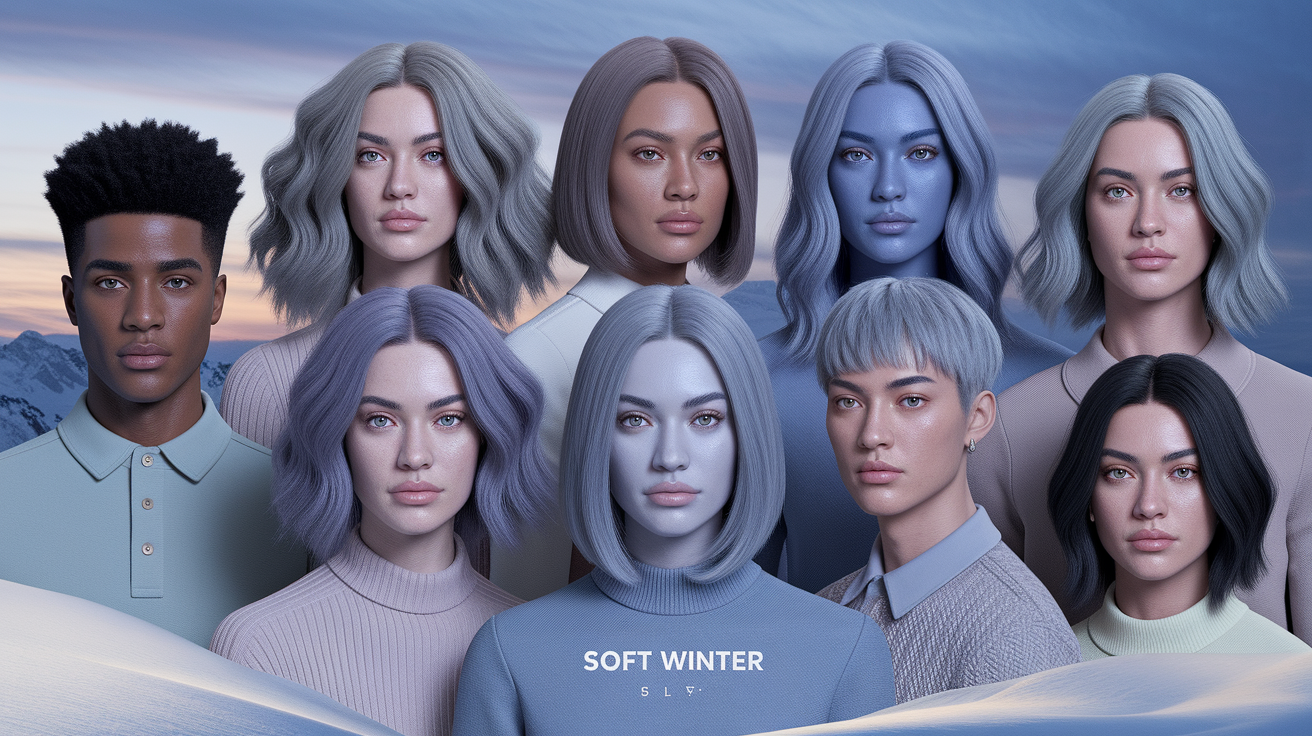
Soft Winter individuals fall at the cool end of the spectrum, yet they appear muted compared to traditional winter shades. The key is balance: cool undertones, medium contrast, and a combination of muted tones that create an understated beauty.
Beyond the mirror
Mirrors lie when the light changes. Notice how clothes and makeup 'act' on your face. If a cool, softened plum lipstick soothes redness and sharpens your eyes, that's a clear indicator. If a bright fuchsia pops and you notice harsh edges or bleached skin, the color is too bright for Soft Winter.
Comfort is key. When a shade is right, you quit fussing. Shoulders collapse. You feel heard, not noisy.
Maintain a straightforward record. Date, unit, color name, material, remarks. Dusty blackberry sweater: skin smooth, eyes bright." After ten entries, patterns emerge.
Test it with a swatch. Hold four families under your chin in daylight: soft, cool berries, cool grays, iced teals, then compare with warm rusts, camel, and bright jewel tones. Alternatively, opt for the collection that balances your skin tone and contours your features without shine.
Your natural coloring
When assessing your color palette, look for cool undertones first. Skin typically takes on a pink, beige, or olive-cool cast rather than golden. The contrast is distinct but not stark, with features appearing muted—more charcoal than jet and more slate than sapphire. Soft Winter individuals often showcase muted tones that blend warmth and coolness, making them unique in their seasonal color palette.
| Feature | Typical Soft Winter |
|---|---|
| Undertone | Cool to neutral-cool |
| Contrast | Medium |
| Hair | Ash brown to dark, low warmth |
| Eyes | Gray, slate blue, cool hazel, soft brown |
| Skin | Beige-pink, cool olive, not golden |
The fabric test
Lay scarves or tees in muted, cool shades near your face: soft blackberry, cranberry, merlot, pewter, charcoal, icy teal, deep pine, stormy navy. Watch for even skin, brighter eyes and rosy lips.
Avoid too bright or warm pieces—neon magenta, tomato red, pumpkin, camel and sunny mustard frequently make your skin look red or your eyes dull.
Mix textures. Matte knits and brushed wool play up Soft Winter's muted quality better than high-shine satin, which can appear too sharp.
Log winners and almost-winners. A week later, you'll have honed down to a reliable palette.
The soft winter colour palette
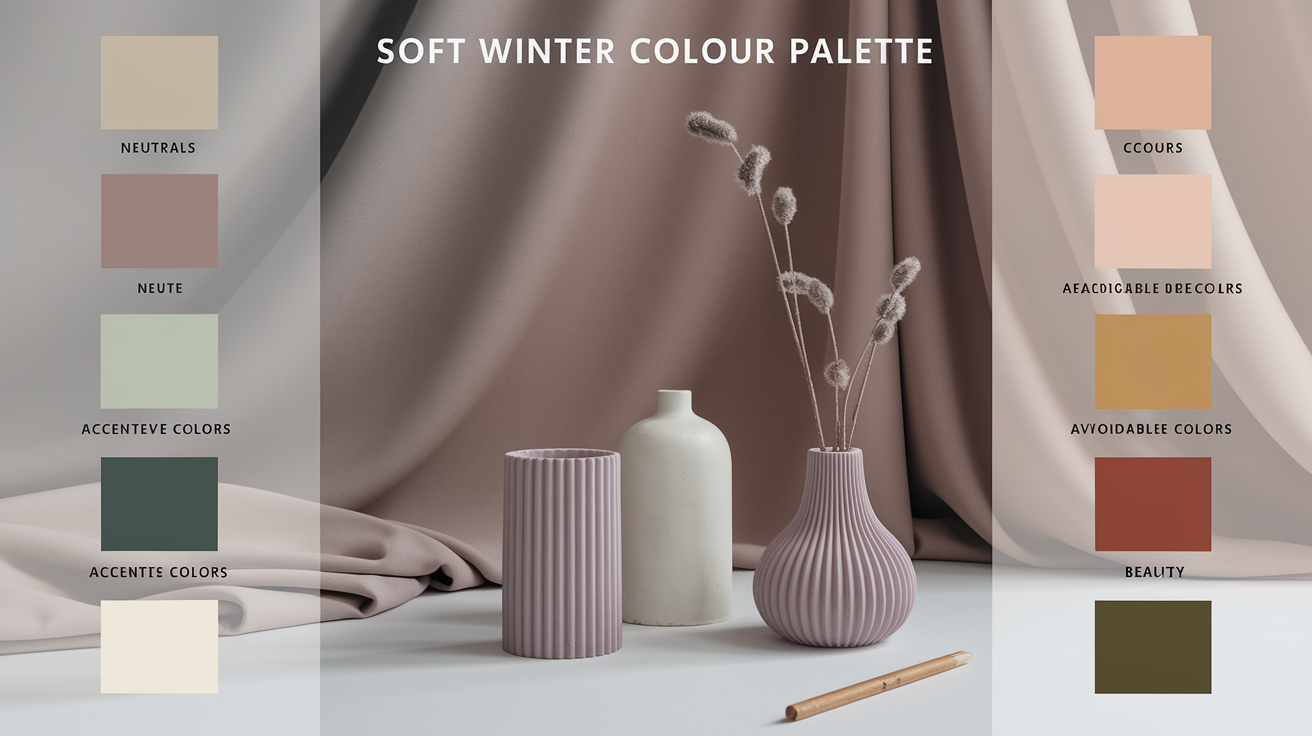
With its cool, muted and deep shades, soft winter treads the line between winter's stark clarity and autumn's still quiet. Imagine tranquil, refined, low-key. It works for cool undertones, medium to dark hair and soft eyes.
Pastel notes—dusty blues, pale lavender, soft white—bring ease, while deeper shades provide heft. Layers of sage, eucalyptus, gray-green and dusty teal create layers of depth without creating noise. Take this palette for your clothes, make-up and accessories to put together a calm, grounded look.
Here's a handy palette to print off for planning your wardrobe in A4 (metric) format.
Core neutrals
These are your daily anchors: charcoal, slate gray, soft navy, muted taupe, mushroom gray, cool‑toned taupe, and pearl white. They own the outfit so accents can breathe.
The soft winter colour palette, charcoal jeans with a pearl‑white knit feel clean, not stark. A soft navy coat over mushroom gray drapes well and plays nice with dusky pink or dusty teal.
Avoid harsh contrasts. Jet black can look heavy–opt for charcoal. Pure, optic white can glare, so opt for pearl white or soft white. The change feels minor, but on soft winter skin it looks sleeker and a bit more polished.
Table: Core Neutrals (hex approximations)
- Charcoal: #33363A
- Slate gray: #5A6068
- Soft navy: #2E3B4E
- Mushroom gray: #8B8682
- Muted taupe (cool): #7B716B
- Pearl white: #F2F4F6
Key accent colors
Keep accents cool and hushed so they blend with your neutrals. Think dusky pinks, soft fuchsia, pine and eucalyptus greens, muted purples, dusty teal, cool mint, gray‑green and pale lavender.
These hues mirror winter's coolness but come across soft, not frosty. They come in scarves, shirts, lip color or a bag strap. A pine sweater against slate gray looks calm. Dusky mauve lipstick and soft navy and pearl white.
- Top five accent colors: * Dusty teal. * Dusky rose pink. * Eucalyptus green. * Soft fuchsia. * Soft lavender
- Pine green
- Cool mint
- Gray‑green
- Muted purple (heathered)
- Dusty blueberry blue
Colors to avoid
Warm, golden or loud shades disrupt the soft winter vibe. They throw a yellow cast on cool undertones, and overpower muted eyes and hair. Neons, real-oranges, tomato-red, warm beige and sunny mustard divert attention where it shouldn't go.
- Warm yellows and golds: add heat that clashes.
- True orange and coral: too bright, turns skin sallow.
- Warm beige and camel: muddy next to cool neutrals.
- Fire‑engine red and neon pink: high-chroma glare.
- Acid greens and chartreuse: harsh against muted greens.
Chart summary:
- Avoid warm yellows/orange/coral
- Avoid warm beige/camel
- Avoid high-chroma neons
- Avoid hot reds and brights
- Prefer cool, muted alternatives
Styling the muted winter
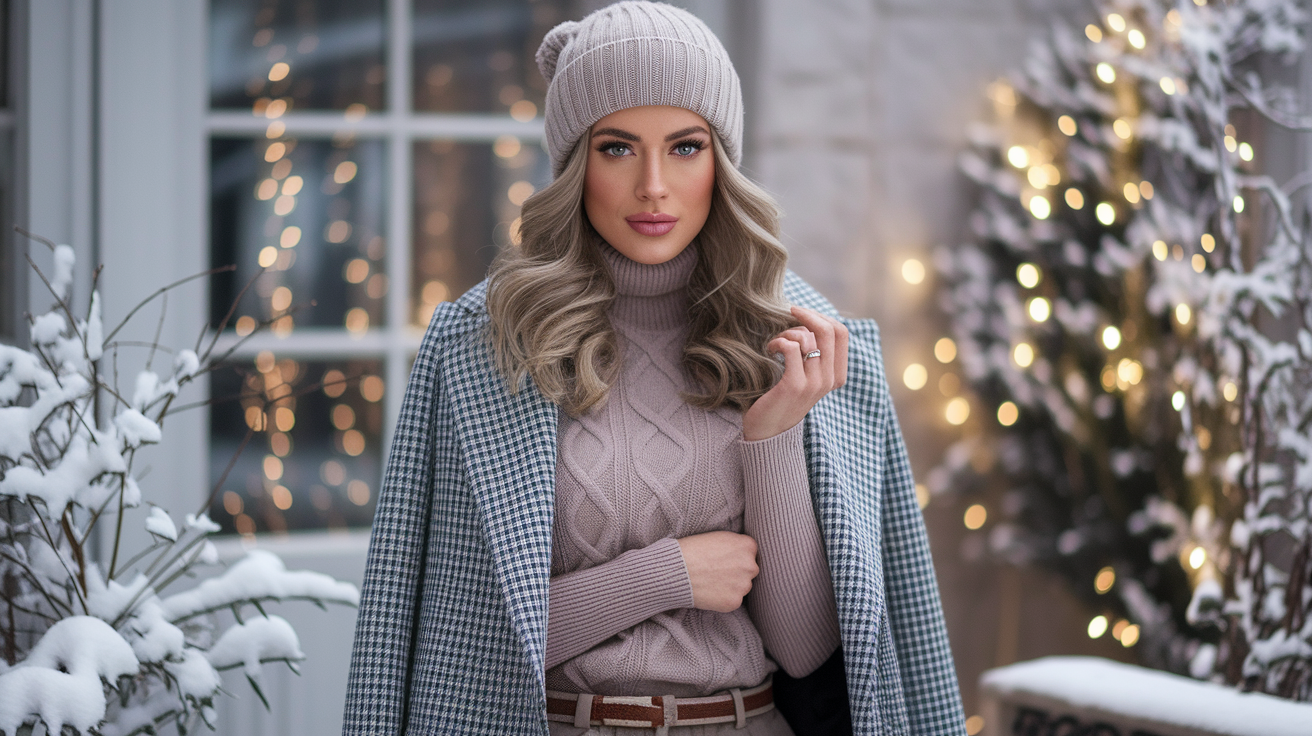
Soft winter styling is all about cool, gentle color, steady balance, and clean lines, particularly for soft winter individuals. It relies on dusty blues, pale lavenders, and muted neutrals such as soft whites and cool creams. The goal is calm cohesion by layering depths of the same family while favoring muted tones that create a stylish appearance across seasons.
Wardrobe building
Start with core neutrals that suit the soft winter category: soft white, cool cream, dove gray, mushroom gray, charcoal, and deep espresso. Then add accents like sage green, eucalyptus, cool mint, gray-green, dusty teal, icy plum, and soft berry. Avoid high-chroma colors; bright red or neon teal will swamp soft winter coloring, overpowering the natural tones.
Spend where you wear the most. Opt for charcoal or deep espresso coats and sweaters in dusty blue, slate, or muted lavender, with bottoms in gray, ink navy, or espresso. Every item should go with at least three others. This personalized approach transforms a tiny wardrobe into multiple outfits, reflecting your unique features.
Layer depth, not contrast. Think dove-gray trousers, dusty teal knit, and a charcoal jacket. The values change, but the palette remains hushed, showcasing the understated beauty of soft winter individuals. Tip with a soft white scarf to lift the face without glare.
A capsule wardrobe aids in organization. Aim for 25–30 items: 2 coats, 5 knits, 5 tops, 4 bottoms, 1 dress, 2 blazers, 3 shoes, and focused accessories. Make prints subtle—herringbone, fine stripes, or a dainty floral in muted versions of winter colors.
Makeup essentials
Choose cool, muted tones that echo the wardrobe: mauve blush, dusty rose or soft berry lipstick, and grey-based eyeshadows like taupe, slate, and charcoal. They bring shape, but not hard edges.
Stay away from warm bronzers, peach-orange blush or copper-gold shadows – they turn orange and battle the palette! For eyes, swipe on deep plum or charcoal liner. It frames without stark black.
A soft, lengthening mascara in charcoal or deep espresso maintains the purity of the look. Core kit: neutral-cool foundation with a natural finish; grey-taupe brow pencil; mauve blush; cool pink or berry lip (matte or satin); slate/charcoal shadow quad; deep plum or charcoal liner; cool-toned highlight (pearl, not gold).
Hair and accessories
Hair reads best in cool shades: ash brown, deep espresso, soft black, or a cool dark blonde. If you color, request ash or neutral tones and stay away from warm gold glazes.
Choose muted metals and stones. Silver, pewter, brushed steel, hematite, and cool pearls all go well. Scarves, bags and shoes in dusty teal, sage, slate or soft berry bring outfits together. Warm gold or bronze is a clash – if you love gold, go pale white-gold and matte finish.
Pairings table:
- Ash brown hair: silver hoops, dusty teal scarf, mushroom-gray bag.
- Deep espresso hair: pewter studs, slate watch, sage suede loafers.
- Soft black hair: hematite pendant, charcoal belt, eucalyptus tote.
- Cool dark blonde: brushed steel rings, dusty blue scarf, dove-gray sneakers.
Beyond the basics
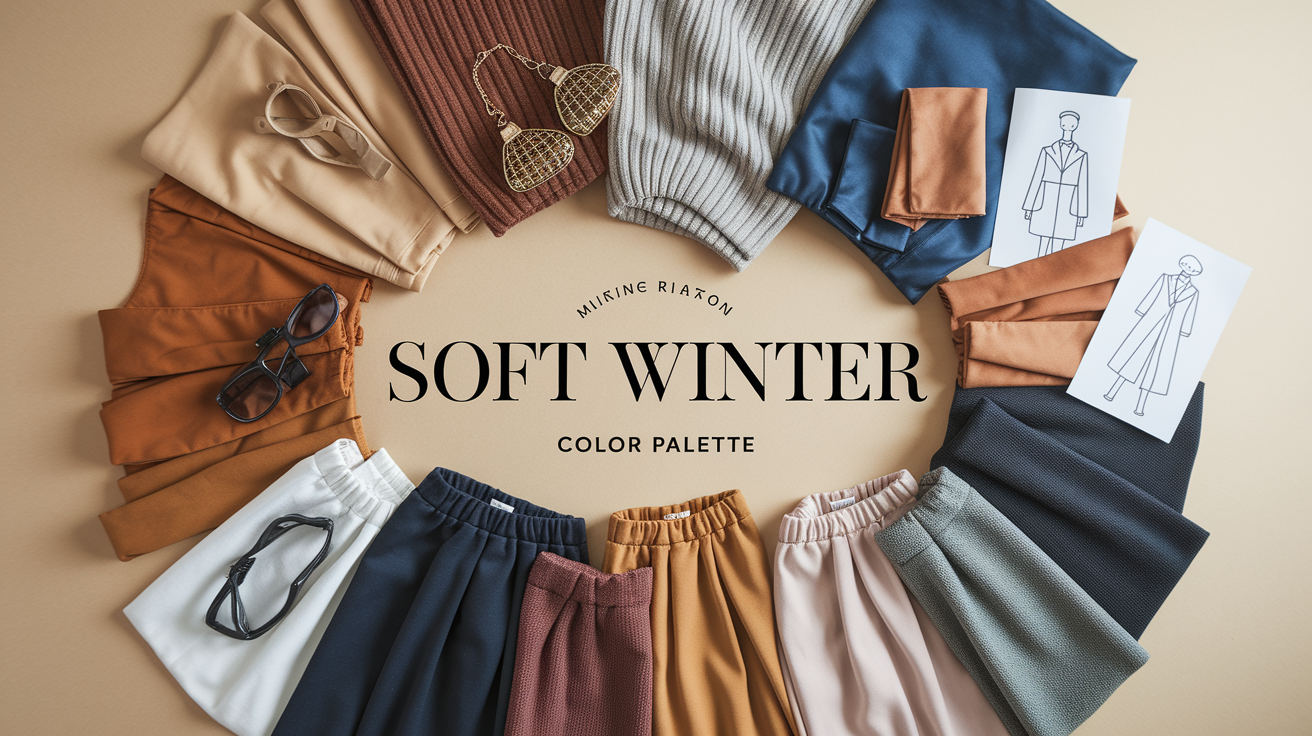
Soft Winter sits at a crossroads: cool at its core, yet gentle and dimmed, embodying the soft winter category. It expanded on the 4×4 color system that merges Winter's cool base with Autumn's gentle hushedness, and now covers subtle subtypes, including **toasted soft winter**s. This broader perspective comes in handy when a single individual is typed five different ways by five experts—testament to the multifaceted and deeply personal nature of color.
The toasted soft winter
Toasted Soft Winter carries an echo of warmth without abandoning its cool mooring. Imagine subtle, natural accents streaked across a sleek foundation. Warm burgundy, soft cocoa, cranberry brown, dusty pine – these hues can infuse depth while remaining serene. Wear either like face accents or as knitwear or belts or shoes.
Maintain equilibrium by combining warm-tipped shades with cool, muted staples. Charcoal coat with a soft cocoa scarf, cool slate dress with warm burgundy flats. Layer different depths—charcoal, pewter, cocoa—to build richness without noise.
How it differs from classic Soft Winter: toasted reads slightly earthier and friendlier to low-warmth accents. Classic leans icier with cleaner cools. Toasted endures warm burgundy. Classic is better with wine, or eggplant or blue red.
The smokey soft winter
Smokey Soft Winter drifts deeper into greyed-out tones. Colors seem shrouded, like a morning mist. Smokey lavender, dusty blue, graphite and charcoal provide a dreamy soft-focus effect that still reads cool.
Rely on low-contrast combinations–charcoal with slate, dusty blue with pewter. Use texture to keep it alive: brushed wool, suede, matte silk. A smokey palette composes a subtle, sophisticated wardrobe that packs easily, photographs beautifully, and never yells.
Signature smokey colors:
- Smokey lavender, heathered mauve
- Dusty blue, blue-grey, slate
- Graphite, charcoal, soft black
- Clouded teal, misty pine
- Wine soot, muted eggplant
Historical context
Seasonal color analysis began with four seasons, then 12. As actual humans continued shattering the mold, larger systems (16+) emerged to offer nuance, including Soft Winter. The 4×4 framework positioned it in between Winter and Autumn softness, cracking the code for those who appeared cool but severe in vivid primaries.
Over time, Winter palettes grew from icy brights to soft cools, influenced by fashion's embrace of minimalism, matte makeup and broken-in linens. Deep Winter (Dark Winter) was the softest Winter in value depth—dark hair, dark eyes, olive skin that tans—and some Soft Winters were frequently mistaken for Dark Autumn or even Summer.
That led to flexible styling rules: combine warm and cool in one look if harmony holds; some Soft Summers even borrow Spring brights in small hits.
Key milestones:
- Early: 4-season model popularized
- Next: 12-season refinement
- Then: 16+ categories acknowledging edge cases
- Now: personal testing, layered depths, and mixed temperatures to serve the person, not the chart
Misconceptions about soft winter
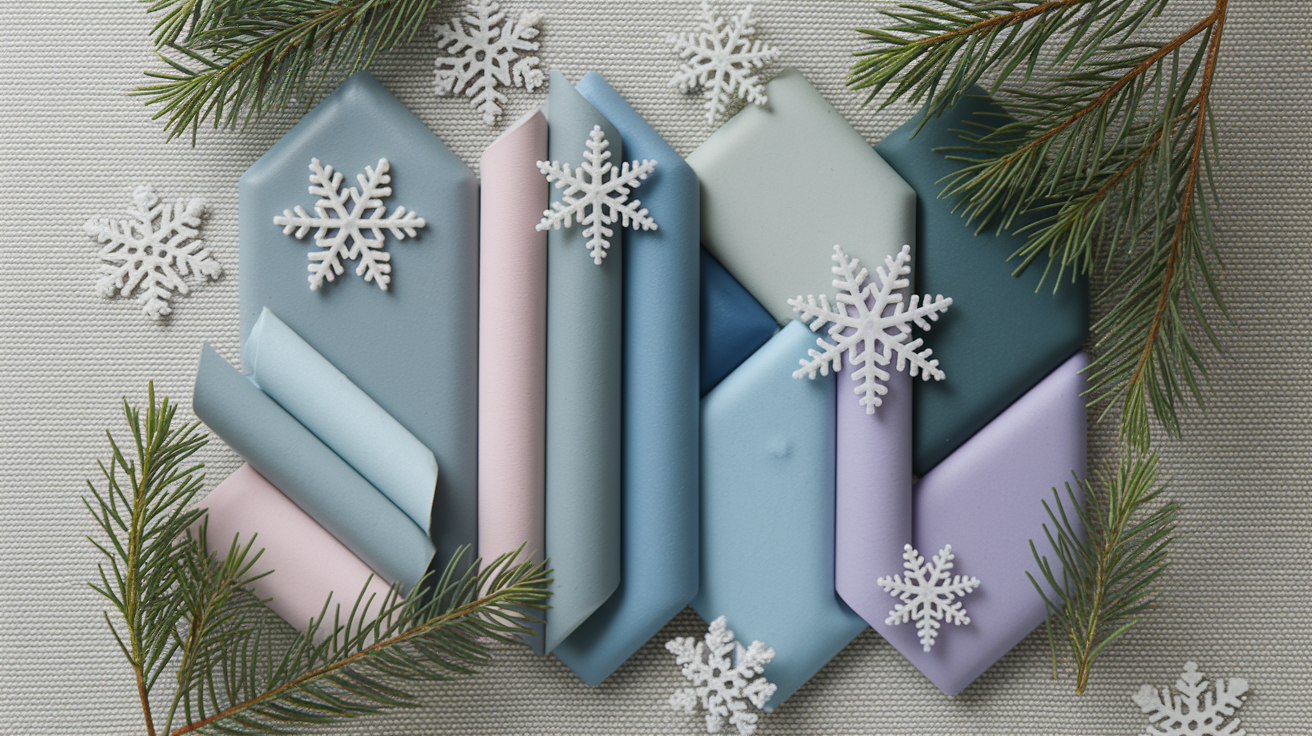
Soft winter individuals enjoy a cool and muted palette with a soft edge, blending traditional winter colors and autumn tones. This fascinating color season favors low to medium contrast, cool undertones, and softened saturation, offering a stylish appearance that exceeds expectations.
Too dark
It's not exclusively for very dark hair, eyes and brows. Cool, softened pigment, not depth alone, is the key. Medium to deep values are effective because the palette toning softens them with gray or blue undertones, maintaining an accord with cool skin.
Imagine charcoal rather than jet, pine instead of emerald, dusty wine instead of neon magenta. You'll find soft winters with ash-brown hair and gray-green eyes, or olive-tan skin and deep brown eyes, or dark hair with soft hazel flecks.
The common denominator is cool undertone and muted contrast, not how dark each element is. Certain black looks great on them, but usually better in the form of 'soft black' or layered textures than harsh head-to-toe gloss.
Lighter complexions can rely on soft navy suits, charcoal denim, muted black blazers, pine green sweaters, heathered plum scarves, and blue-gray tees. Sprinkle cool silver, gunmetal or pewter on top of shiny gold.
Prints, keep 'em low contrast–ink and gray florals trumps high-contrast stripes! Corrective note: soft winters are cool-toned, softly muted, and thrive in lower contrast, not "very dark only.
Only for winter
It's not a calendar season palette. Not a seasonal set of cool, muted hues that shift with fabric and weight and layering. Thick wool thickens a color; floating cotton thins it.
Warm months: choose soft navy linen, blue-gray chambray, icy pink poplin, or dusty raspberry swimwear. Light layers maintain the cool vibe without visual weight.
Cold months: charcoal coats, pine green knits, plum skirts, and muted black boots carry depth. Combine mattes to mute contrast.
Outfit ideas by season:
- Spring: blue-gray trench, soft white tee, charcoal chinos, pewter loafers.
- Summer: icy pink shirt, soft navy shorts, silver watch, slate sandals.
- Fall: pine cardigan, muted raspberry top, charcoal jeans, cool taupe bag.
- Winter: charcoal coat, black cherry dress, soft black tights, gunmetal earrings.
Corrective note: the palette works year-round via fabric, not temperature.
No bright colors
Soft winter doesn't prohibit brilliance, it leaches it. The palette consists of cool, somewhat soft brights — icy pink, dusty icy blue, muted fuchsia, toned raspberry and black cherry. They come across bright but veiled, never neon or warm.
No warm brights or citrusy tones—they contend with the cool base. Use brights as accents: a toned raspberry lip, icy pink shell under charcoal, black cherry clutch with soft navy, muted fuchsia scarf near the face.
Keep your field color as mute as possible so your accent can sing without glare. Acceptable soft winter brights and best uses:
- Icy pink: blouses, scarves, nail color.
- Muted fuchsia: lipstick, silk square, knit hat.
- Toned raspberry: dresses, statement knit, suede flats.
- Black cherry: evening dress, bag, belt.
- Icy blue: shirts, ties, pocket squares.
Corrective note: brightness is fine when cool, softened, and controlled.
Conclusion
Soft Winter occupies a peaceful place. Cool base, low chroma, deep roots. Shades appear subtle, not bland. Think plum, pewter, charcoal, blue spruce. They go so well with light and shadow. They keep their form on skin with no shine.
To construct outfits, pile on depths. Go for a mink scarf with a slate coat. Throw on a wine lip + steel watch. For work, choose ink pants and a soft teal shirt. For night, opt for charcoal, soft black and rose smoke. Cool metal. Silver, rhodium, or white gold fare best.
To keep it fresh, try one swap at a time. A cooler blush a softer winter experience it in day light. Ready to polish your roster. Post your picks or request combo inspiration!
Frequently Asked Questions
What defines a Soft Winter palette?
Soft Winter, a unique season in the seasonal color palette, combines cool undertones with low-to-medium contrast. The color analysis reveals that colors are muted, deep, and a bit softened, featuring shades like deep charcoal blue and soft navy, enhancing the stylish appearance of soft winter individuals.
How do I know if I'm Soft Winter and not Soft Summer?
Verify temperature and depth in your seasonal color analysis method. Soft Winter individuals exhibit cool tones with a touch of deeper shades, showcasing more defined eyes and darker features. If muted tones wash you out but true black still works, you likely belong to the soft winter category.
Which colors are best for a Soft Winter wardrobe?
Choose cool, muted tones like soft navy, deep charcoal blue, and stormy teal, alongside traditional winter shades such as cranberry and dusk mauve. I prefer keeping whites cool and soft, ensuring a stylish appearance with textured blacks for a soft winter category.
Can Soft Winters wear black and white?
Yes, but modify. Black works best in softer fabrics or with texture, especially for soft winter individuals. Combine it with muted shades and soft whites to reduce contrast, ensuring a stylish appearance that's balanced and gentle when close to the face.
What makeup suits Soft Winter?
Opt for cool, muted colors that align with the soft winter category. Foundation with cool undertones, rosy-mauve blush, and berry lips complement the stylish appearance, while taupe or deep charcoal blue eyeshadow echoes the soft winter individuals' muted shades.
How do I style Soft Winter for work and events?
For work, wear deep charcoal blue, soft navy, and cool taupe suits with muted highlights. For occasions, experiment with a cranberry dress, pine green satin, or dusk mauve paired with silver jewelry, keeping the contrast soft for a stylish appearance.
What are common misconceptions about Soft Winter?
Myths include that "Soft Winter can wear bright jewel tones" and "Soft = warm." In reality, Soft Winter individuals thrive in muted tones and require a seasonal color palette featuring soft colors, emphasizing harmony over overwhelming contrast.